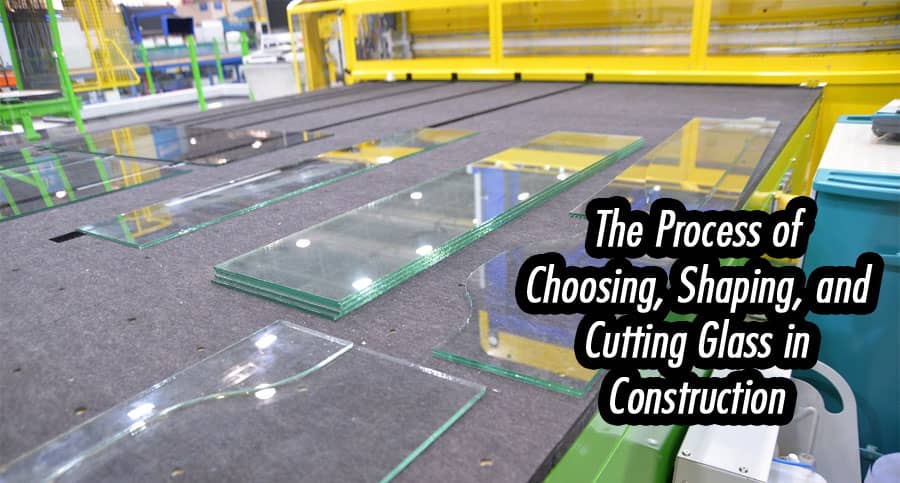The Process of Choosing, Shaping, and Cutting Glass in Construction

Introduction
Glass, a fundamental material in modern construction, holds pivotal roles beyond its aesthetic appeal. Its use transcends traditional windows, encompassing structural elements, facades, and innovative design features. Understanding the process of choosing, shaping, and cutting glass is imperative in ensuring both safety and functionality in construction.
Importance of Glass
Glass serves multifaceted roles in construction, offering transparency, insulation, and architectural allure. Its versatility allows architects and builders to create spaces filled with natural light, energy efficiency, and design flexibility.
Types of Glass
Exploring the array of glass types, from annealed to tempered and laminated, each tailored for specific applications in construction, provides insight into their distinct properties and functionalities.
Glass Shaping Process
Delving into the meticulous shaping of glass involves understanding the various techniques and methods utilized, such as molding, blowing, or floating, which influence the final product's characteristics.
Cutting Techniques
The art of cutting glass requires precision and expertise. Different cutting methods, including scoring and snapping, diamond wheel cutting, or laser cutting, impact the glass's structural integrity and finishing.
Tools and Equipment
Detailing the tools and equipment used in glass cutting, from basic glass cutters to advanced machinery, elucidates the technology behind achieving accurate and seamless cuts.
Safety Measures
Prioritizing safety measures during the glass cutting process, including personal protective equipment and safe handling practices, mitigates potential hazards and ensures a secure working environment.
Glass Cutting Methods
Unraveling the nuances of various cutting methods, emphasizing the importance of precision in achieving desired shapes and sizes, contributes to the quality and functionality of glass in construction.
- Precision in Cutting: Highlighting the role of precision in cutting glass, discussing the impact on fitting, insulation, and structural integrity, elucidates its significance in construction projects.
Cutting in Construction
Examining the specific applications of cut glass in construction, from customized windows to intricate architectural elements, showcases its adaptability and versatility in diverse projects.
Applications in Design
Beyond functionality, the aesthetic value of cut glass in architectural design is profound. Its use in creating stunning facades, artistic installations, and innovative structures elevates the visual appeal of buildings.
Innovations in Glass
The continuous innovation in glass technology, such as smart glass and self-healing glass, heralds a new era in construction, offering enhanced functionalities and sustainability.
Future of Glass in Construction
Forecasting the future trends in glass usage within the construction industry, including advancements in materials and design, hints at a dynamic landscape embracing sustainability and innovation.
Conclusion
The process of choosing, shaping, and cutting glass in construction is an intricate fusion of artistry, precision, and technological advancement. Its significance extends beyond functionality, contributing to the aesthetic, safety, and sustainability aspects of modern architecture.
FAQs
Is tempered glass the best choice for all construction purposes?
Tempered glass offers higher strength and safety features, but the choice depends on specific project requirements.
What safety measures should one take while cutting glass?
Using gloves, safety glasses, and ensuring a well-ventilated area are crucial.
How does precision cutting impact the performance of glass in construction?
Precise cutting ensures accurate fitting, better insulation, and enhances structural integrity.
Are there environmentally friendly glass cutting techniques?
Some methods, like water jet cutting, are more eco-friendly due to reduced waste and lower energy consumption.
What innovations can we expect in glass technology for construction in the future?
Advancements in smart glass, energy efficiency, and sustainable materials are anticipated, revolutionizing construction practices.
